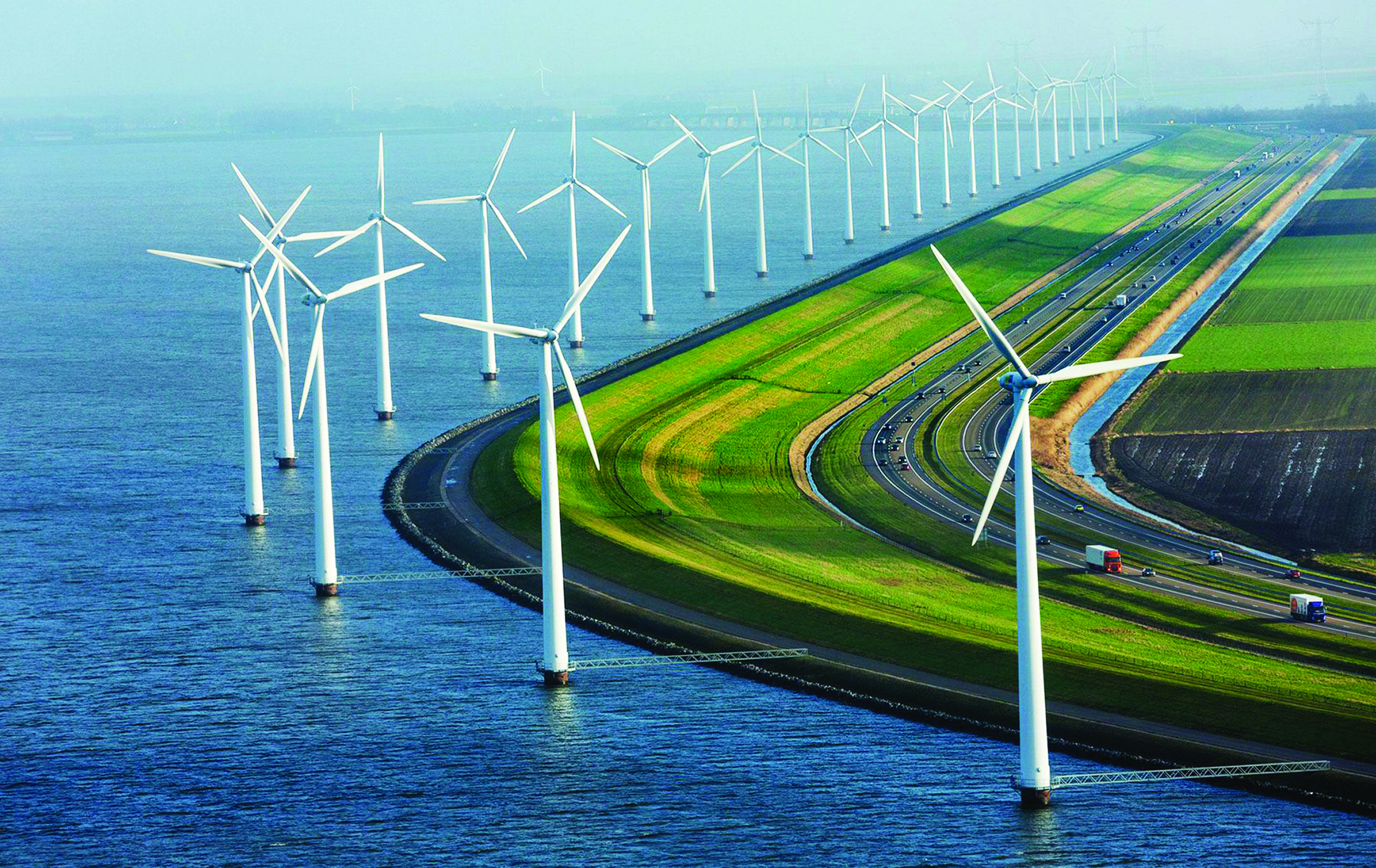Great demand, great potential
According to a report by Vietnam Electricity, the power consumption demand of the North currently accounts for nearly 50% of the whole country and is forecast to grow higher than the national average rate. In 2022, the power source in the North is expected to be put into operation very little, the additional new power sources in the Central and Southern regions (mainly renewable energy) in recent years have only partially supported the North because the transmission capacity through the 500kV line is technically limited.
Meanwhile, the situation of supplying coal for power production faces many difficulties. The Northern power system is in danger of continual shortage of peak capacity in hot months. Therefore, EVN proposes that by 2025, it is necessary to put into operation about 5,500MW of renewable power sources, including 4,000MW of offshore wind power and about 1,500MW of solar power with appropriate storage systems.
Ms. Cao Thi Thu Yen - renewable energy and environment expert at Power Construction Engineering Joint Stock Company 1 (EVNPECC1) said Vietnam's energy demand is increasing, while traditional energy sources are close to reaching the development threshold. EVN's development of renewable energy sources, especially taking the lead in deploying offshore wind power, will be both appropriate in terms of technical expertise and investment orientation, while ensuring national interests and sovereignty in the Gulf of Tonkin region.
According to research by many organizations including EVNPECC1, the wind potential in the Gulf of Tonkin is evaluated quite well, suitable for offshore wind power development. At an altitude of 100m, the average wind speed in this area is about 7.5- 8.5m/s. According to the Danish Energy Agency (DEA), the offshore wind power engineering potential in this region is about 18GW. Currently, some provinces such as Quang Ninh Province, Ho Chi Minh City, Hai Phong City, Thai Binh and Nam Dinh Provinces have submitted proposals to the competent agencies for the purpose of developing offshore wind power sources.
Sharing about the potential for wind power development in Vietnam, Mr. Pham Nguyen Hung - Deputy Director of the Department of Electricity and Renewable Energy (Ministry of Industry and Trade) noted: With a long coastline, Vietnam has enormous potential for wind energy development. According to the draft Power Plan VIII being reviewed and completed by the Ministry of Industry and Trade, Vietnam is expected to increase the total wind power capacity from about 4,000MW in 2022 to about 16,121MW of onshore and nearshore wind power and about 7,000MW of offshore wind power by 2030.

Illustration photo
Not a small challenge
“However, to develop offshore wind power, Vietnam will also face significant challenges. Typically, the legal framework for this field is still entangled, in addition to the large capital investment value, it is also related to industries such as oil and gas, maritime, fisheries and especially national security and defense, etc.,” said Mr. Pham Nguyen Hung.
Assessing the difficulties, Mr. Dang Hoang An - Deputy Minister of Industry and Trade said: With the type of offshore wind power source, Vietnam has no development experience in this field. Due to the complex nature of technique and technology, investment process and procedure, as well as the large scale of investment, the implementation of the planned capacity of up to 7,000MW by 2030 is really a big challenge.
According to Ms. Cao Thi Thu Yen, to develop offshore wind power, Vietnam needs to overcome many challenges related to the technical level, harmonization of benefits and costs. The offshore wind power source in the Gulf of Tonkin is related to national security and other purposes of exploitation and use of the sea such as fisheries, tourism, navigation, as well as nature conservation, and so on. Sensitive-zoned marine regions shall be assigned a contractor or limited bidding, for the state Group to manage and exploit them.
Regarding power planning, it is necessary to develop a comprehensive and regional/provincial plan on the power sources and transmission with specific mobilization time, which will save the use of resources and natural resources. Along with that, a national agency is assigned to organize a preliminary assessment to avoid waste and overlap and show objectivity when consulting stakeholders.
According to Ms. Cao Thi Thu Yen, in terms of project finance and management, the rate of offshore wind power investment is currently decreasing rapidly over time and depends on project scale, technology type, marine and coastal resources. The total investment for a project with a capacity of 1,000MW of offshore wind power in Vietnam is estimated at USD3.15 billion and is forecast to decrease to USD2.15 billion by 2030. Technically, offshore wind power is a new type of source, complex in technology and weather-dependent on construction. Vietnam Electricity has fully qualified consulting units to assist it in planning and investment/design consultancy as well as project management consultancy for the offshore wind power sector.
“In the short term, the potential of offshore wind power needs to be comprehensively assessed and implemented soon, in order to meet the two urgent goals of power supply and serve as a premise for policy improvement,” emphasized Ms. Cao Thi Thu Yen.